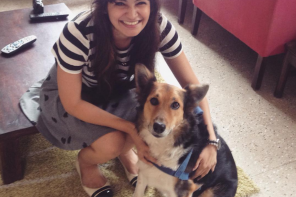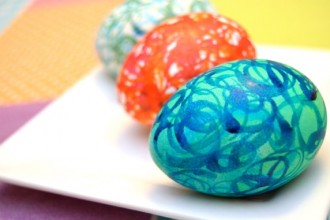Last week, we sat with a team of four inherently creative designers, Vrinda Mathur, Gazal Bawa and Navya Aggarwal, graduates from NIFT Delhi and Sahej Bhatia from GGSIPU who have successfully launched a company called Studio Wood collective. They took us through a detailed tour of what their start up is about.
Q. So what exactly is Studio Wood Collective?
A. Studio Wood Collective, basically is an amalgamation of four different people from different work backgrounds, an architect, an interior designer, a graphic designer and an accessory designer who aspire to give conventional things an unconventional outlook. We started this initiative in the one year after college as a small short term project which turned into this huge initiative about design and creativity. Though we started off with furniture remodelling and redesigning, SWC is not only about furniture, it’s about how different people look at design. So if I wanted to define SWC, I would say it’s a design studio which is looking to transcend perspectives.
Q. What led to the inception of SWC?
A. Like I said, it started out as a short term project. My (Vrinda’s) parents own a furniture manufacturing unit which doesn’t really have any designer backing to it. So we stepped in and saw that there was a lot of raw material in the form of samples or prototypes lying around. So we had around 40-50 different things there and the idea was to redevelop these products and do a collection around it. The whole idea also brewed from how we can relook at furniture or change common notions. Like a chair, doesn’t necessarily have to be a chair. It can be broken down and converted into something entirely different
Q. Did you ever think you would be doing something like this growing up?
A. No! None of us really thought we’d start something like this.
For me (Gazal) it was more about exploring different avenues when we started this. I had initially only worked with computers, which I was really tired of doing and wanted to try something more hands on.
And moreover all of us come from such different fields that none of thought we’d be working with furniture. But that is also only one phase, we’re looking to expand as a design studio in the next year and year and a half.
Q. How did you land your first client?
A. We did an exhibition of our collection, that’s how we landed our first client. All our marketing and promotion was done through facebook and word of mouth. We had around a turnover of 400 people by the end of 2 days and that’s how we got orders based on that collection; And basically meeting with prospective clients who were interested in our project.
We also launched a service which sought to remodel old furniture which people could neither use or wanted to throw out. That also garnered positive reviews.
Q. What are some of the challenges you faced along the way?
A. Financial investment is something which is always one of the biggest challenges faced by any startup. Aside from that, research and development was also a tumultuous task. There was a lot of trial and error in terms of product creation, which of course is a part of learning. You conceptualise something and it doesn’t always turn out the way you want it to.
Another hefty challenge was reaching out to people to market and publicize our exhibition. Most of it happened through facebook which has a high level of risk involved. I mean it would say, 500 people attending and not even half would turn up. But at the end of the day, the turnout was spectacular.
Moreover we didn’t want to be a simple pinterest refurbishment studio, we wanted to do something unique and different which was the toughest challenge of all.
Q. So how did you get your initial investment? How have you expanded since then?
From our pockets. All four of us invested in the project to get it to where it is today. We have expanded in the sense that after the exhibition, we were able to break even with the orders we booked, which is a huge deal.
Q. Is there some specific ideating process you follow while working on a project?
A. Not really, all of us would just sit around brainstorming. It’s literally doodling and bad sketching. And the four of us never really reached a state of contentment with a project. There was never really a fixed process, it differed with every project. We would find something we think could work and go iska kuch kar sakte hai kya? And that would literally be it.
Q. What’s the craziest thing you’ve invented so far?
A. One thing we ideated a lot on was the inverted V table. It was a simple structure, but it took the longest time to come up with. It was the first thing we started off with and the last thing we finished. It used to be a shelf, so that journey from shelf to table took a lot of R and D.
Q. Do you have any particular quirks while working?
A. Oh yeah, order lots and lots of rolls and kathis and listening to music. Other than that it was just the fact that we couldn’t just sit still and brainstorm, we had to move around a lot. Oh! And yeah we always had to Instagram everything.
Q. Where did the magic happen?
A. The manufacturing unit itself had a small office space where we used to sit and work. We used to drag the furniture inside, mulling over it till we came up with a satisfactory idea.
Q. What are some of the industry lessons you’d like to give our readers?
A.
- Don’t throw away your old furniture. Give it to us. 😉
- Start looking at things with a new perspective.
- You don’t have to change everything in your room to make it look good. Everything doesn’t have to be matchy matchy. One element can change it’s entire look.
- Also welcome and appreciate design. Everything doesn’t have to be ready made and not everything designer is expensive. Our USP is the fact that we’ve made highly accessible and affordable pieces. So basically don’t dismiss designers.
Q. So what are the best and the worst parts of dealing with clients?
A. The best part has to be the overwhelming feeling of accomplishment when people appreciate and recognise your work. The turnout at the exhibition was one of the most exhilarating experiences of our lives because we weren’t expecting it, especially not from the 35-45 age group. Our target market is 25-35 age group, so it came as a very delightful surprise.
We haven’t really experienced the bad stuff yet, but we’re anticipating the tendency to complain. Like a client calling after some months and saying iska paint chip off ho raha hai or the measurement is off by some centimetres and stuff like that.
Q. Are your clients ever apprehensive about the fact that the structure is old and hence fragile?
A. See that’s where the judgement call comes in because you can’t use everything. And as designers it’s our first duty to see whether the existing structure is actually usable or not. So we first assure ourselves of the quality and fragility of a piece of furniture before trying anything with it.
Q. If SWC could have a theme song, what would it be?
A. At this point, we will have to go with ‘Happy’ by Pharell Williams because we sang that at the launch. It’s a nice idea though; we’ll come up with one.
Q. What advice would you give to any rookie in your profession?
A. Go for it! Doing something like this is a risk, but just go for it, give it a shot for your own satisfaction. Don’t be afraid of failure from the get go, because you don’t know where you’ll end up.
You know how they have that saying that shoot for the moon and if you don’t reach it, you’ll be still among the stars? It was the complete opposite for us. We were treating it like a summer project and it turned into something of this huge a scale. So yeah stuff like that does happen.
Specially for people belonging to our age group, this is the prime time to slog and make your dreams come true. You can’t do that when you’re forty, you have to seize the opportunity now. This time doesn’t come back.
















